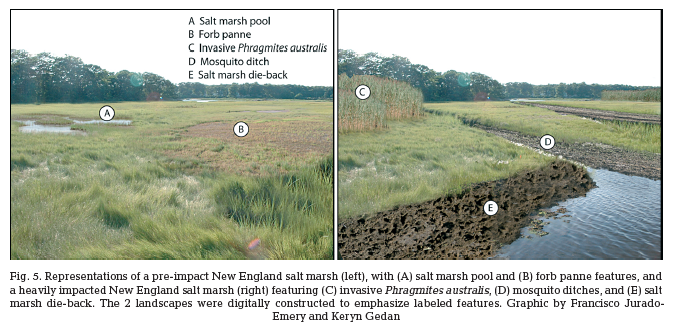Centuries of Human-Driven Change in Salt Marsh Ecosystems

Perhaps something for the radio?
Centuries of Human-Driven Change in Salt Marsh Ecosystems
K. Bromberg Gedan,1 B.R. Silliman,2
and M.D. Bertness1
1Department of Ecology and Evolutionary Biology, Brown University, Providence, Rhode Island 02912; email: Keryn Gedan@Brown.edu, Mark Bertness@Brown.edu
2Department of Zoology, University of Florida, Gainesville, Florida 32611; email: brs@ufl.edu
http://www.annualreviews.org/doi/pdf/10.1146/annurev.marine.010908.163930
Abstract
Salt marshes are among the most abundant, fertile, and accessible coastal habitats on earth, and they provide more ecosystem services to coastal pop- ulations than any other environment. Since the Middle Ages, humans have manipulated salt marshes at a grand scale, altering species composition, distribution, and ecosystem function. Here, we review historic and contem- porary human activities in marsh ecosystems—exploitation of plant prod- ucts; conversion to farmland, salt works, and urban land; introduction of non-native species; alteration of coastal hydrology; and metal and nutrient pollution. Unexpectedly, diverse types of impacts can have a similar conse- quence, turning salt marsh food webs upside down, dramatically increasing top down control. Of the various impacts, invasive species, runaway con- sumer effects, and sea level rise represent the greatest threats to salt marsh ecosystems. We conclude that the best way to protect salt marshes and the services they provide is through the integrated approach of ecosystem-based management.
